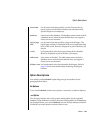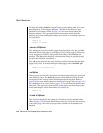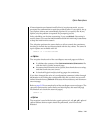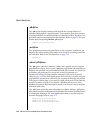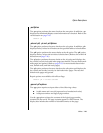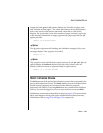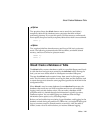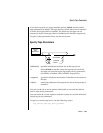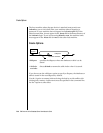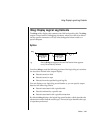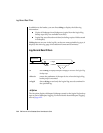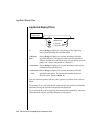
Utilities 7-47
tbload: Create a Database or Table
-p Option
The -p option directs the tbinit daemon not to search for (and delete)
temporary tables left by database server processes that died without
performing cleanup. If you use this option, OnLine returns to online mode
more rapidly but space used by temporary tables left on disk is not reclaimed.
tbinit -p
-s Option
The -s option initializes shared memory and leaves OnLine in quiescent
mode. The following commands take OnLine offline, reinitialize shared
memory, and leave OnLine in quiescent mode:
tbmode -ky
tbinit -s
tbload: Create a Database or Table
The tbload utility creates a database or table in a specified dbspace and loads
it with data from an input tape created by the tbunload utility. During the
load, you can move blobs stored in a blobspace to another blobspace.
The tape that tbload reads contains binary data stored in disk-page-sized
units. For this reason, the machine receiving the data and the machine used
to create the tape must share the same page size (specified as BUFFSIZE in the
configuration file).
When tbload is used to create databases from a tbunload input tape, the
databases that result are not ANSI-compliant and do not use transaction
logging until you take further action. You can make a database ANSI-
complaint after it is loaded through the DB-Monitor Logical-Logs menu,
Databases option. You can add logging to a database either through
DB-Monitor (same option) or by executing tbtape.
Before you load a table into an existing, logged database, end logging for the
database or load during off-peak hours. (Otherwise, you might fill the logical
logs or consume excessive shared-memory resources.) After the table is
loaded, create a level-0 archive before you resume database logging.



